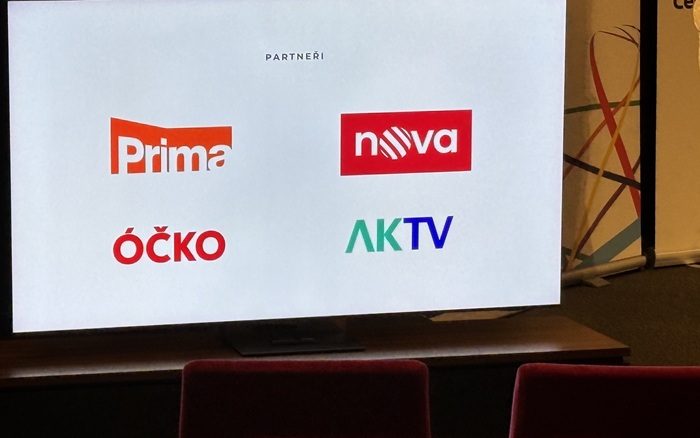The leading Czech television groups Nova and Prima are continuing to invest in terrestrial broadcasting while strengthening their position in the online world. They currently see a path for further development in their presence on both platforms. This emerged from discussions at this year's Digimedia conference.
Prima: Two audiences, two approaches
In response to this year's launch of the new Oneplay platform, which combined the offerings of O2 TV and the video platform Voyo, the market will consolidate, according to Jan Maxa, who in April became director of the VOD segment of the Prima group. ‘The merger of O2 TV and Voya into an IPTV and streaming network will cause the rest of the market to react and consolidate,’ Maxa predicts. He also believes that the integration of IPTV and video streaming will become the dominant way of consuming video content. prima+ has already established cooperation with the operator Vodafone and in recent days with SledovaniTV.
Maxa also stated that streaming and traditional broadcasting serve different audiences: ‘Cannibalisation is minimal. They are more complementary worlds,’ he said, referring to viewers of TV Prima and the prima+ platform. Prima is therefore developing specific content for each platform. While the linear channel targets more traditional viewers, prima+ appeals to a younger audience accustomed to unlimited choice in the online environment.
Currently, prima+ has approximately 1.4 million registered users (the same number as reported by Oneplay following the merger of O2 TV and Voya, but these are paying users, editor's note). Of the 1.4 million registered users, more than 20% use one of the paid prima+ tariffs (i.e. approximately 280,000 subscribers). prima+ has three tariffs, two of which are paid, depending on the amount of advertising (no advertising or reduced advertising compared to the version for registered users). Approximately 15% of paying subscribers come through paid operators, while the rest (85%) subscribe to prima+ directly.
Nova wants to stand on ‘two legs’
TV Nova's technical director, Josef Uher, stated that Nova has no reason to change its distribution mix and abandon the terrestrial platform at this time. ‘The distribution mix works for us and there is no reason to change it,’ said Josef Uher, adding that Nova wants to keep terrestrial broadcasting for more conservative viewers who still use it. At the same time, however, Nova is strengthening its online platform Oneplay (formerly Voyo). It is reportedly important for the company to stand on two legs – linear and online broadcasting – and to be present where its viewers are.
Óčko: Terrestrial broadcasting is expensive, but it helps
The music television channel Óčko, which targets a young audience, is still wondering whether to remain on terrestrial broadcasting. The channel's director, Štěpán Wolde, admitted that the costs of terrestrial distribution are high and that the debate about whether to stay is ‘constant and never-ending’. Nevertheless, he considers the presence on DVB-T2 to be crucial: ‘It keeps us a relevant brand. Together with social media, it's the reason why Óčko still exists.’
According to Wolde, Óčko's viewership has grown by 10% year-on-year, mainly thanks to the integration of content on social media and linear broadcasting. Óčko also believes that expanding TV audience measurement to include out-of-home viewing could help smaller TV stations. Óčko relies on its strong social media presence and believes that this fact will be reflected in the data.
The long-standing business cooperation between the Mafra and Prima groups, which has so far been mainly represented on the advertising market, moved into the field of social media this spring. The newly created entity Prima CoolLab is headed by Štěpán Wolde. ‘Prima is now using the know-how we have from digital,’ he explained. He did not comment on long-standing speculation about a possible ownership link between Óčko and Prima.
Source: mediaguru.cz

